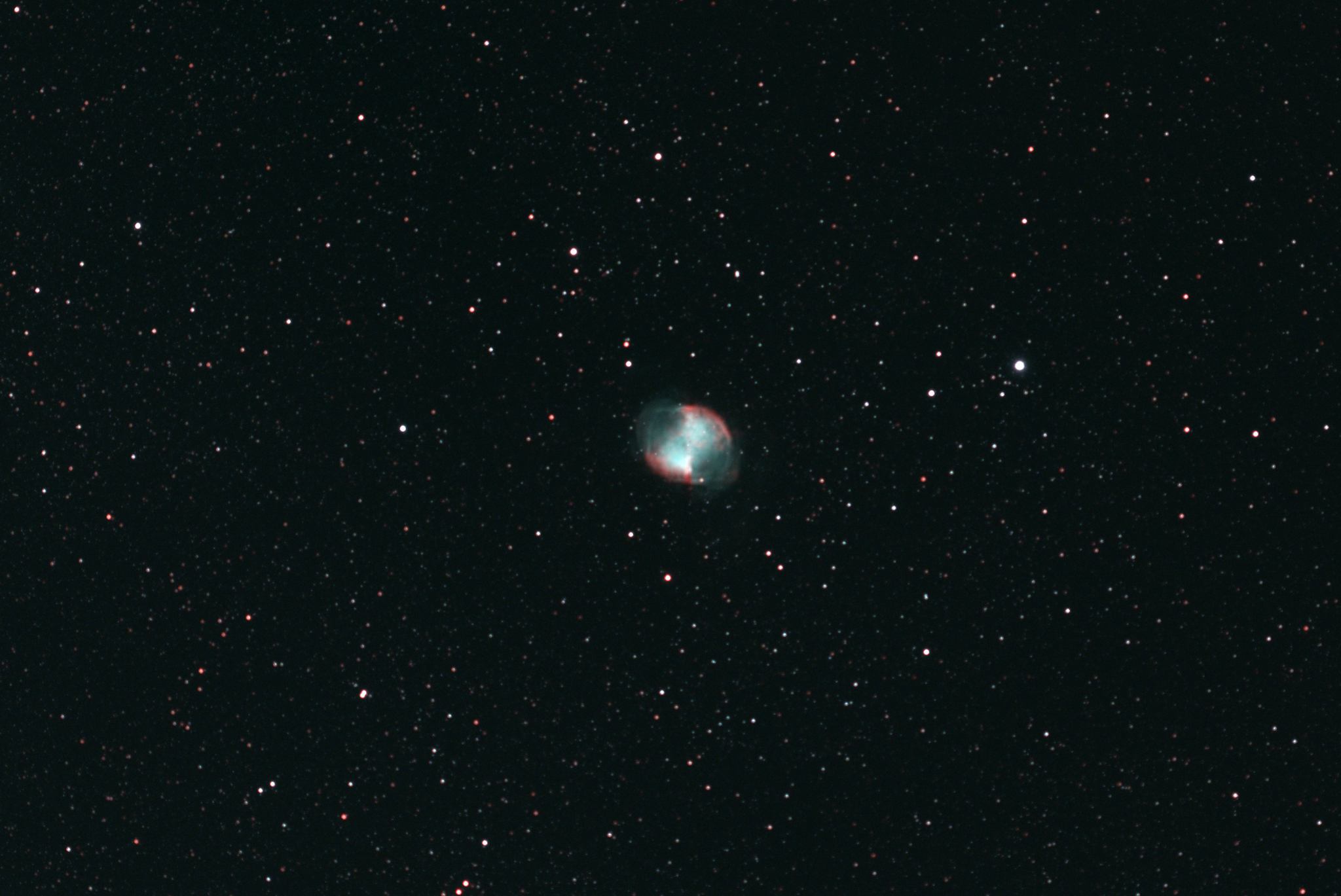The Dumbbell Nebula: Messier 27
At roughly a distance of 1,227 light years away, the Dumbbell Nebula was the first planetary nebula that Charles Messier discovered in 1764. The term 'planetary' generally means it has a small round planet like shape when viewed in a small telescope.
This nebula is the result of a star shedding off in layers, which in this image illuminate in clouds of red and blue.
In 1885, the mathematician Johann Balmer came up with a formula to describe the wavelengths (or colors) that the Hydrogen atom emits when the hydrogen's electron drops in orbit. With his discovery, we are able to infer the gasses emitted by these nebulae by measuring the wavelength of light that it is emitting. For the Hydrogen atom, these wavelengths are referred to as "The Balmer Series".
In this image, the deep red light indicates high levels of hydrogen gasses illuminating when electrons fall from its 3rd to 2nd lowest energy levels. When the hydrogen electron falls in orbit, a red wavelength photon is released. This color is referred to as H-alpha (hydrogen alpha).
The blue/aqua wavelength is also from the hydrogen atom and these blue photons are released when the hydrogen electron falls from the 4th to the 2nd inner most energy level.
Hydrogen is the most abundant element in the universe. It has only one electron, one photon and no neutrons. It is the simplest element that exists which is probably why it is the most abundant.
I might be wrong about the blue color in this image being due to hydrogen-beta (it might be that my color accuracy is off and this color should look more green which would be due to 'doubly ionized oxygen gas O2' or OIII. Backyard science can be complicated...

Comments
Post a Comment